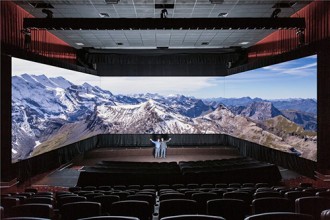LCD Beats CRT, or the Woes of the Display Industry
 The words LCD beat CRT ran through my head as I walked through the exhibits at SID’s DisplayWeek in Vancouver. Though that observation may seem trite, I think it should be chanted by all of us until we declare victory and ask where we go from here. If we can learn anything from the last twenty years of the display industry it is that technology doesn’t change things for producers, only for consumers.
The words LCD beat CRT ran through my head as I walked through the exhibits at SID’s DisplayWeek in Vancouver. Though that observation may seem trite, I think it should be chanted by all of us until we declare victory and ask where we go from here. If we can learn anything from the last twenty years of the display industry it is that technology doesn’t change things for producers, only for consumers.
Some attendees seemed shocked when I described LCD panel makers as charities during my talks at the Business Conference and the Symposium (invited paper 5.1). That is what I intended. It is time to realize that each technical breakthrough from VGA notebook screens to UHD TV screens has done nothing to alter the course of value destruction for stakeholders. Some LCD panel makers have generated economic profits some of the time, but the overall result has been strongly negative. As presented, the aggregate result for all Taiwanese producers from 2001 through 2012 was more than $19 billion of cash flowing from investors and other stakeholders to employees and suppliers. That’s backwards: free cash flow is supposed to go into the hands of stakeholders. Otherwise, stakeholders are funding a not-for-profit enterprise.
Taiwanese LCD makers are not unique, they just report under consistent rules and run tightly focused display businesses. LCD market dynamics thus dominate their results, which illuminate the scene for us. In this light, we can see that $68 billion of capital expenditures by them helped build domestic infrastructure and support domestic employment. Such social benefits are reasonable goals of national policies and are charitable outcomes when produced by not-for-profit businesses. Thus, the people that worked hard to build Taiwan’s LCD industry should be proud of their social results while appreciating that their efforts transferred value to consumers.
Yes, consumers have been the primary beneficiaries of unprofitable technology advances. The aggregate net loss of $7 billion means panel buyers paid less than total cost for the displays. Consumers got better or bigger displays for their dollars year after year. If flat panel makers keep trying to solve their business problems with technology, they will keep selling more for less.
So if we return to the chant, LCD beat CRT. What difference will it make if OLED beats LCD? Listening to some of the earnest speeches and papers at DisplayWeek, one might think that this technology contest will change the world in some important (albeit undefined) way. But why would it? If panel makers continue playing the same game under the same rules the result might look like baseball with aluminum bats instead of wooden ones. So what?
If the past is any guide, it will take about $125 billion more capex to double display area capacity from current levels. If we assume that converting some existing LCD capacity will increase OLED capacity, we must also assume that even more capex might be required because OLED processes take more equipment. Let’s round down for the sake of argument anyway… Who will put $100 billion more into the ground and what pricing power will they have as a result?
If only one or two producers put a more modest amount of money into the OLED hole, while other makers put money into the LCD hole, an OLED price premium might be sustained, but then most consumers will buy value-priced LCD products. In that scenario, LCD producers continue losing while consumers continue winning and the financial benefits for OLED producers, who also make LCD, remain uncertain. If many producers heap lots of money into the OLED hole, then OLED beats LCD like LCD beat CRT and producers lose while consumers win.
Thus, as run over the past two decades, flat panel businesses are essentially domestic charities that benefit global consumers. LCD or OLED: who wins? Who cares? All the panels look great!
David Barnes is an analyst for Insight Media and writer for Display Central.





